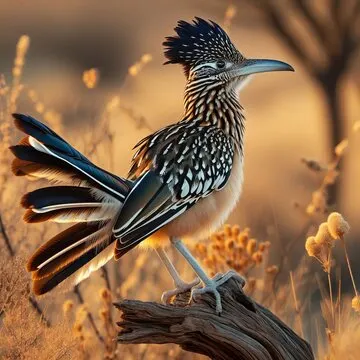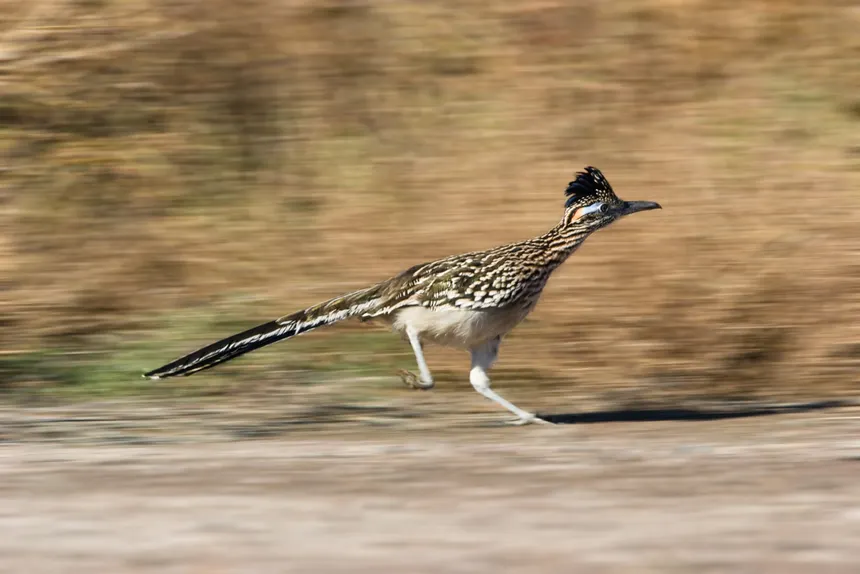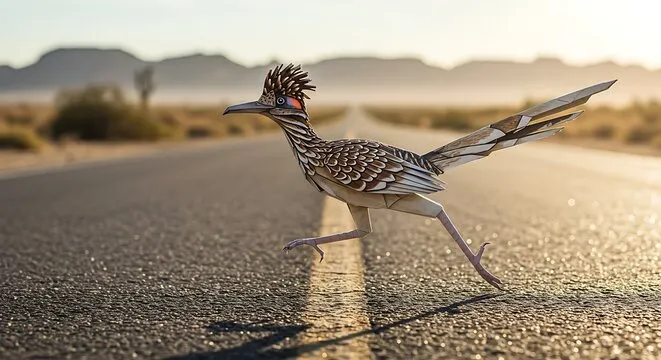Fascinating Life of the Roadrunner

The roadrunner, often remembered from cartoons as a comically fast bird taunting a coyote, is in fact a real-life desert dweller known for its impressive speed, cunning behavior, and adaptability. Native to the arid regions of North America, particularly the southwestern United States and Mexico, the roadrunner is a member of the cuckoo family and a master of desert survival. Despite its comical pop culture image, the roadrunner is a fascinating and skilled predator with unique adaptations.
Species Overview
There are two species of roadrunners:
- Greater Roadrunner (Geococcyx californianus) – the more widespread and iconic species found throughout the U.S. Southwest and Mexico.
- Lesser Roadrunner (Geococcyx velox) – smaller and less studied, found mostly in Mexico and Central America.
Both species share similar characteristics: long legs, strong feet, long tails, and a streaked brown-and-white plumage that blends with the desert.
Speed and Movement
One of the roadrunner’s most famous traits is its speed. The greater roadrunner can run up to 20 miles per hour (32 km/h), making it one of the fastest-running birds that can fly. Interestingly, it prefers running over flying, reserving its wings for short bursts or escape.
Roadrunners use their speed to chase prey and evade predators. When moving quickly, they hold their head forward and tail straight out, resembling a miniature dinosaur in motion.

Diet: A Fearless Predator
Despite its comical image, the roadrunner is a skilled and opportunistic carnivore. Its diet includes:
- Insects (grasshoppers, beetles)
- Small mammals (mice, young rats)
- Reptiles (including lizards and venomous snakes, which it can kill with a rapid pecking motion)
- Birds and their eggs
- Occasionally fruit and seeds
Roadrunners are especially known for their snake-hunting skills. They often work in pairs to distract and kill snakes, including rattlesnakes.
Adaptations to Desert Life
Roadrunners are well-suited to the harsh desert environment:
- Efficient thermoregulation: They use a behavior called “sunbathing”, where they lower their feathers and expose dark skin on their back to absorb warmth in the morning.
- Water conservation: Roadrunners get most of their moisture from their prey and rarely drink water.
- Special salt glands: Located near their eyes, these help excrete excess salt without the need for urination, preserving water.
Nesting and Reproduction
Roadrunners form monogamous pairs and are known to stay together for several breeding seasons. During mating season, the male will offer food to the female as part of the courtship ritual.
- Nests are built in low shrubs, cacti, or small trees using sticks, leaves, and feathers.
- Clutch size ranges from 2 to 6 eggs, which both parents incubate.
- Chicks hatch in about 20 days and fledge within a few weeks.
Vocalizations and Communication
Roadrunners are not silent. They communicate through:
- Cooing sounds (like a dove), often used to attract mates
- Clicking noises made with their beaks
- Tail flicking and crest raising, especially when threatened or alert
Roadrunners in Culture and Myth
In Native American and Mexican folklore, the roadrunner is often seen as a symbol of speed, courage, and protection. Some tribes believed its footprint, which resembles an “X,” warded off evil spirits because it confused the direction the bird was traveling.
In pop culture, the Looney Tunes character “Road Runner” introduced millions to the idea of a fast-running desert bird—though real roadrunners are far more complex and interesting than their animated counterpart.
Conservation Status
The greater roadrunner is currently listed as Least Concern by the IUCN. However, habitat loss due to urban development and road expansion poses localized threats. Their adaptability to open habitats and rural areas has helped them remain relatively stable across much of their range.

Conclusion
The roadrunner is much more than a desert novelty. It’s a versatile predator, desert survivor, and fascinating bird with behaviors and traits well-suited to its dry environment. Whether sprinting through sagebrush, sunbathing on a rock, or hunting snakes, the roadrunner is one of nature’s most uniquely adapted avian wonders—a true symbol of the American Southwest.



